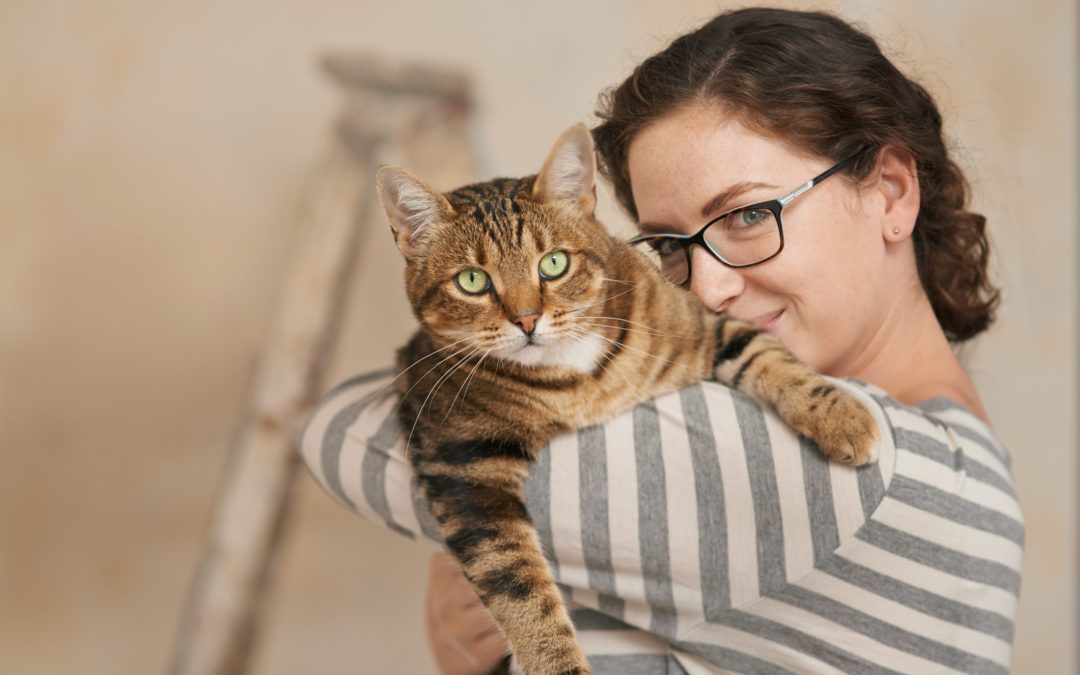When it comes to their relationships with humans, dogs are the equivalent of excited 4-year-olds. They wag their tails excitedly when you come home, respond vocally to strangers and practically beg to be petted. They sniff and play and love their humans. You are literally their world.
Cats, on the other hand, are more independent creatures. While some felines are just as cuddly as internet videos and memes claim, others will struggle against any form of human contact. They hide behind sofas. Perform tasks on their own kitty time. Some only interact when you need to complete a task such as changing their litter box or filling their food bowl. So how do you handle a cat that’s not purring against your leg and climbing in your lap ready for petting time?
Very carefully, of course. Here are a few steps you can take to ease the process when handling a new cat for the first time. These suggestions may also work well for getting touch-sensitive felines used to physical contact.
Find the Right Pickup Move: Because cats are so fiercely independent and have strong self-protection instincts, it’s important to allow your cat to feel in control. Get down on the floor with her and allow her to sniff around a bit and climb over you before attempting a pickup move. If she seems to be relaxing—or, better yet, rolls on her back to reveal her tummy for stroking—you can try to gently pick her up. Safety Tip: Never pick up your cat by the scruff of her neck. While you might see mama cats pick up kittens in their mouths this way as an instinct, it could cause damage to your cat or kitten if you grab her by the neck.
- Master your cuddle technique: Your kitty’s weight needs to be properly supported when you pick her up. According to the ASPCA, both the front and back legs should be supported. Never pick your cat up by the head or front legs only. “To pick up your cat, place one hand behind the front legs and another under the hindquarters. Lift gently.”
- Don’t become a cat-napper: Hold your cat firmly, but not so tight that he feels like the star of a kitty crime drama. If he struggles, don’t fight and hold him hostage. Let him drop gently to the floor in that oh-so-graceful kitty way. When cats feel trapped, they are more likely to lash out by biting, scratching or clawing. Thus, it’s crucial you allow him the freedom to leave anytime.
If you do sustain a cat scratch or bite, clean the affected area with soap and water. If the wound is still bleeding, cover it with medical gauze. Antibacterial ointment is optional. If you have been bitten by a feral cat, you may want to call Animal Control and/or seek medical attention to ensure the cat (and your wound) is free from rabies or other disease. Deeper bites may require stitches.
Most cat bites and scratches will heal on their own within about 10 days. During this time, watch for symptoms of infection or disease such as swelling, pus discharge, fever and increasing pain. According to the CDC, about 40% of cats carry the bacteria that causes Cat-scratch Disease, commonly known as “cat scratch fever.” Most infected felines have no visible symptoms, so you’ll want to contact your doctor immediately if you show any signs of this condition.
To learn more about your cat, call us at East Valley Animal Hospital to schedule an appointment.

